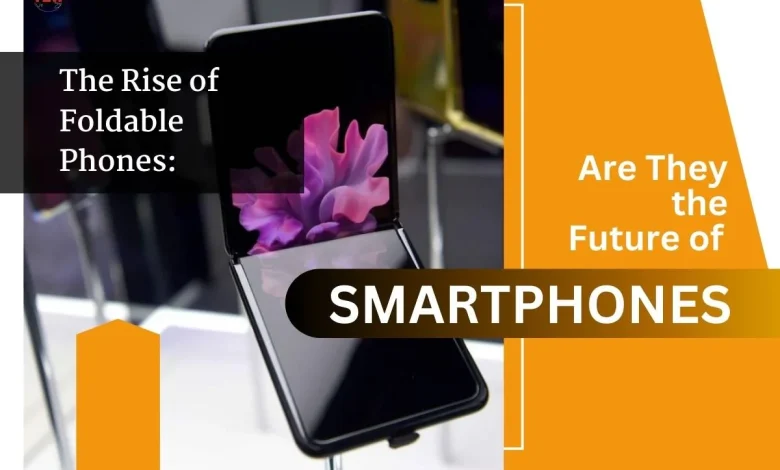Foldable Phones: The Future?

Foldable Phones: The Future?
Foldable phones have sparked a lot of excitement in the tech world. With their unique design and functionality, these devices are breaking the boundaries of traditional smartphones. As technology advances, foldable phones are becoming more popular. This article explores the reasons behind this trend, the benefits of foldable phones, and whether they are indeed the future of smartphones.
1. The Evolution of Foldable Phones
The concept of foldable phones started as a futuristic idea. Early models were mostly prototypes, showcasing what could be possible with flexible screens. However, major tech companies, such as Samsung and Huawei, turned this idea into reality. In recent years, they’ve released foldable smartphones, like the Samsung Galaxy Z Fold and Huawei Mate X.
The development of foldable technology has come a long way. Initially, these phones faced issues with durability, hinge design, and screen quality. However, brands have worked tirelessly to address these problems. Today’s foldable phones are more durable and reliable than their predecessors, and they continue to improve.
2. What Makes Foldable Phones Unique?
Foldable phones stand out because of their flexible screens. Unlike traditional phones with rigid displays, these devices have screens that can bend. This flexibility allows users to switch between a compact phone mode and a larger tablet-like screen. Essentially, users can enjoy two devices in one, which enhances multitasking and media consumption.
Foldable phones also offer a new level of versatility. When folded, they are small and easy to carry. When opened, they provide a larger screen, ideal for watching videos, reading, and working. This dual functionality appeals to many users, making foldable phones an exciting addition to the smartphone market.

3. Benefits of Foldable Phones
Foldable phones bring a range of benefits that enhance the user experience. Below are some of the key advantages:
- Increased Screen Space: A larger screen offers more room for browsing, gaming, and productivity tasks. With foldable phones, users can enjoy a big screen without carrying a bulky device.
- Better Multitasking: Foldable devices allow users to run multiple apps side by side. This feature makes multitasking easier and more efficient. For example, users can take notes while watching a video or chat while browsing the web.
- Enhanced Gaming and Entertainment: Gamers and entertainment lovers benefit from the expanded screen size. The larger display provides a more immersive experience, whether playing games or watching movies.
- Portability and Convenience: Foldable phones are designed to be compact when not in use. They easily fit into pockets or bags, making them convenient for users who are always on the go.
4. Technological Advancements Driving Foldable Phones
Several technological advancements make foldable phones possible. One key development is flexible display technology. Traditional screens would break if bent. However, flexible displays use materials that can bend without damage. OLED technology plays a significant role here, as OLED screens are more flexible and thinner than LCD screens.
Hinge technology has also advanced significantly. The hinge allows the phone to fold and unfold smoothly. It’s designed to handle frequent use without wearing out. Additionally, manufacturers are using materials like ultra-thin glass, which provides durability while remaining flexible.
Battery technology is another area of improvement. Foldable phones require more power to run their larger displays, so companies are developing batteries that can handle this demand. In the future, battery life and energy efficiency will likely improve even further.
5. Challenges Facing Foldable Phones
Despite the excitement, foldable phones face challenges that need addressing. One of the main concerns is durability. While companies have made significant progress, foldable screens are still more delicate than traditional displays. Dust and particles can also affect the hinge mechanism over time.
Cost is another factor. Foldable phones are expensive due to their advanced technology and materials. For many users, the high price can be a barrier. However, as technology improves, the cost may decrease, making foldable phones more affordable in the future.
Software optimization is also a challenge. Not all apps are designed for foldable screens, which can lead to compatibility issues. App developers need to create versions of their applications that work seamlessly on both phone and tablet modes. Fortunately, many companies are working with developers to ensure a smooth experience.
6. Are Foldable Phones the Future?
Foldable phones represent a new direction for smartphone technology. They offer unique benefits, and more people are beginning to appreciate their functionality. However, whether they are the future of smartphones remains uncertain.
On the one hand, foldable phones provide a fresh experience that appeals to tech enthusiasts and professionals. Their versatility and multitasking capabilities align with current user needs. As these devices become more durable and affordable, they could become mainstream.
On the other hand, foldable phones may not appeal to everyone. Some users prefer the simplicity of traditional smartphones. Additionally, high costs may limit widespread adoption, especially in regions where budget smartphones are more popular.
7. Innovations on the Horizon
The future holds exciting possibilities for foldable phones. Companies are continuously researching and developing new technologies to improve these devices. For instance, rollable screens could offer even more flexibility. Unlike foldable screens, rollable displays expand by rolling out, allowing for an even larger screen without increasing the device’s thickness.
We may also see improvements in battery technology, making foldable phones last longer on a single charge. Enhanced AI integration can improve multitasking by predicting user needs and optimizing app usage.
In terms of design, foldable phones could become thinner and lighter. Current models are relatively thick due to their dual-screen structure. However, future innovations may allow for a sleeker and more portable form factor.

8. Major Brands in the Foldable Phone Market
Several brands are leading the way in foldable phone development. Samsung has been a key player with its Galaxy Z Fold and Galaxy Z Flip series. These models showcase Samsung’s expertise in foldable screen technology and hinge design.
Huawei has also made strides with its Mate X series. Despite challenges in certain markets, Huawei’s foldable phones have gained popularity, especially in Asia.
Oppo and Motorola are also exploring foldable phone designs. Motorola’s Razr series combines nostalgia with modern technology, targeting users who appreciate both style and functionality.
9. Consumer Reception and Market Growth
Consumer reception to foldable phones has been positive, especially among tech-savvy individuals. Early adopters appreciate the unique features and enjoy trying new technology. Although foldable phones currently have a small market share, their popularity is growing. Market reports indicate that the foldable phone market will expand in the coming years as more brands enter and prices decrease.
For businesses, foldable phones offer new opportunities in app development. Companies can create apps that take advantage of larger screens, benefiting from the unique form factor.
Conclusion
Foldable phones bring a fresh perspective to the smartphone market. They combine the convenience of a phone with the functionality of a tablet. As technology advances, foldable phones are becoming more durable, affordable, and practical. However, challenges like durability and high costs remain.
The future of foldable phones is promising, with potential innovations in rollable screens, battery life, and design. Major brands like Samsung, Huawei, and Motorola are committed to improving foldable technology. As more consumers embrace foldable phones, they may become a significant part of the smartphone industry.
While foldable phones may not replace traditional smartphones entirely, they offer a glimpse into the future. Their unique features and versatility could shape the next generation of mobile devices. Whether they become the new standard or remain a niche product, foldable phones undoubtedly represent an exciting development in technology.
HAXORIAN SKILLS




